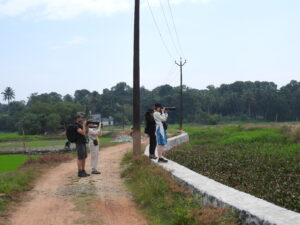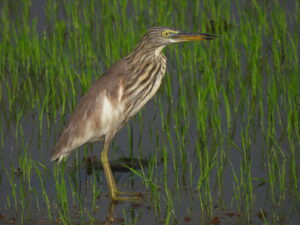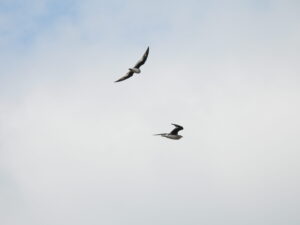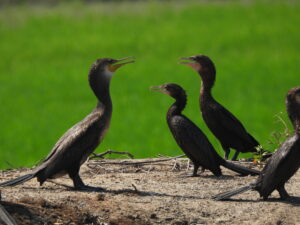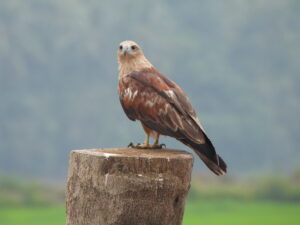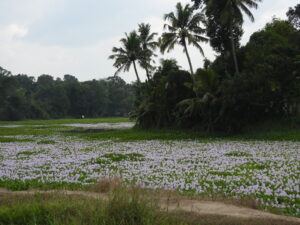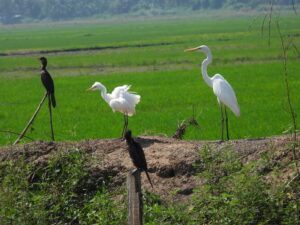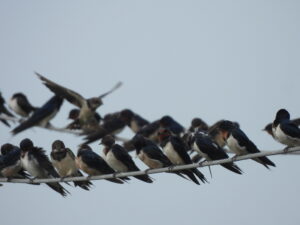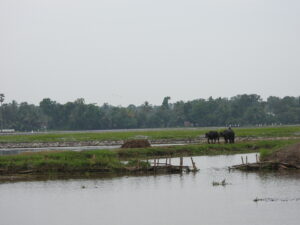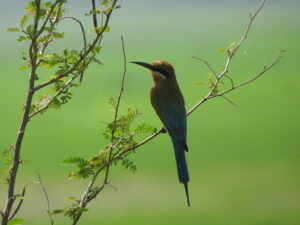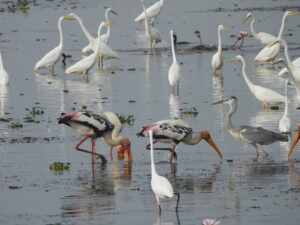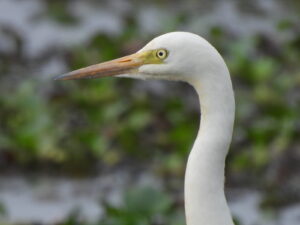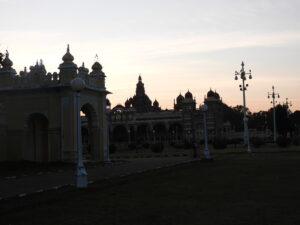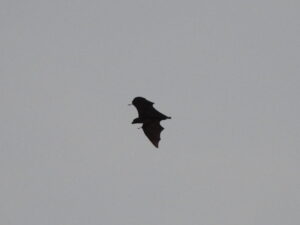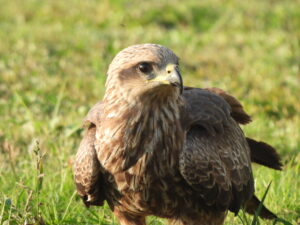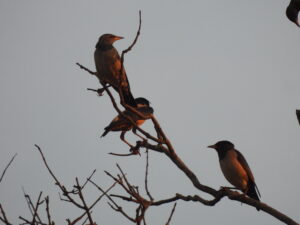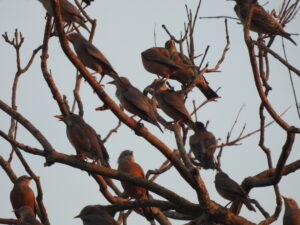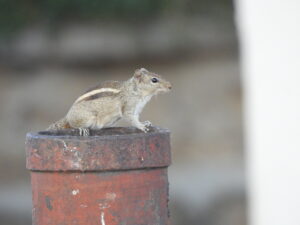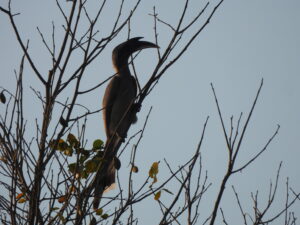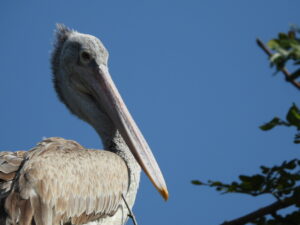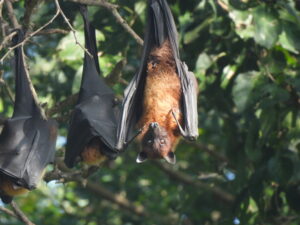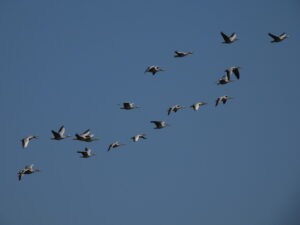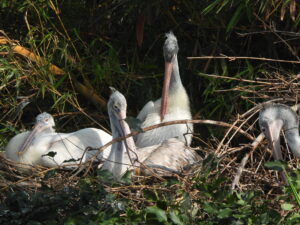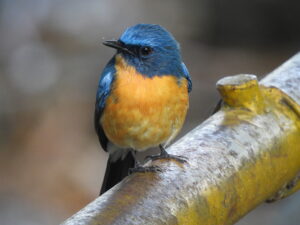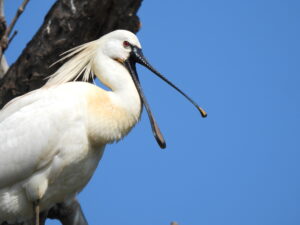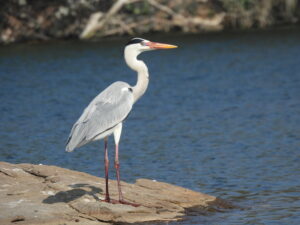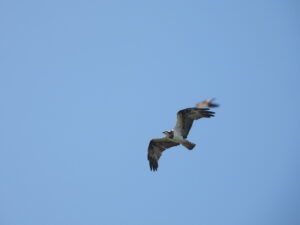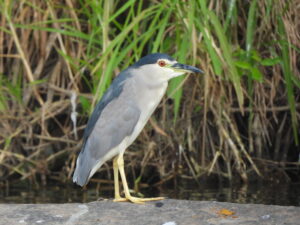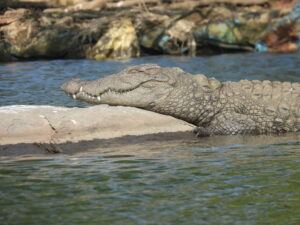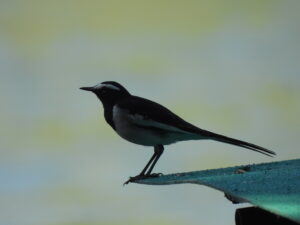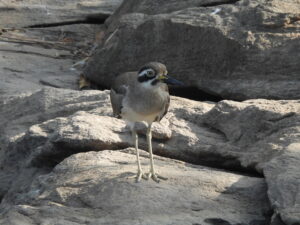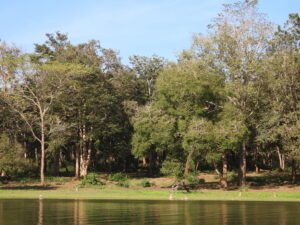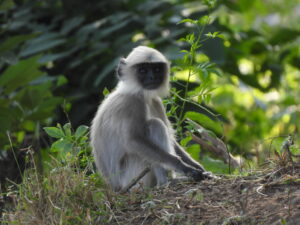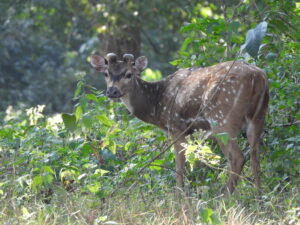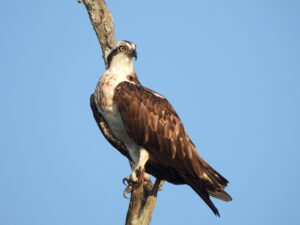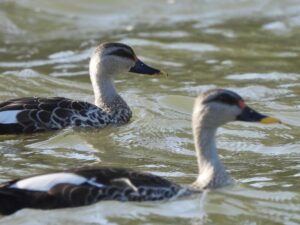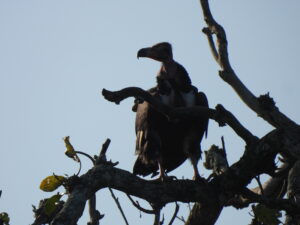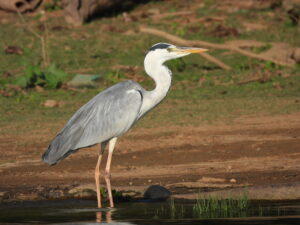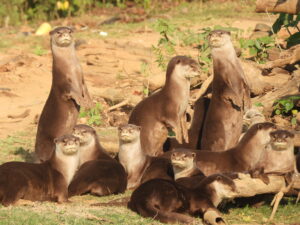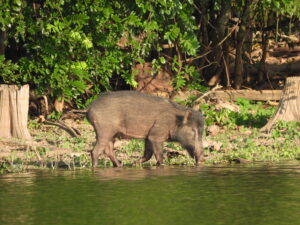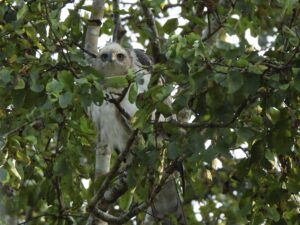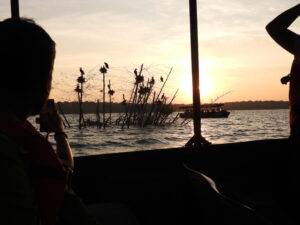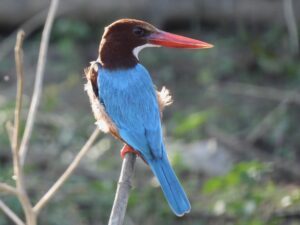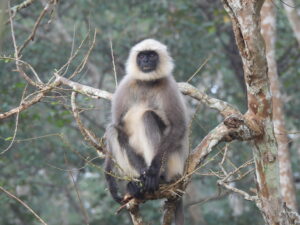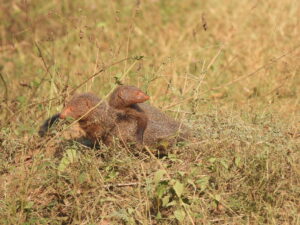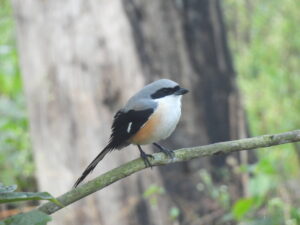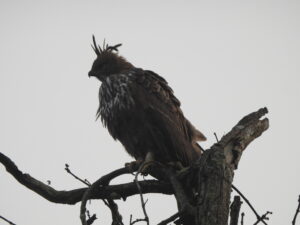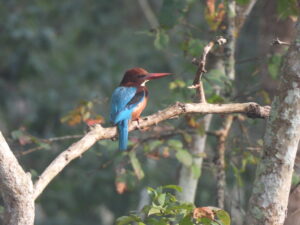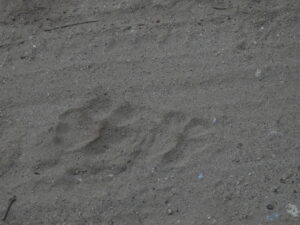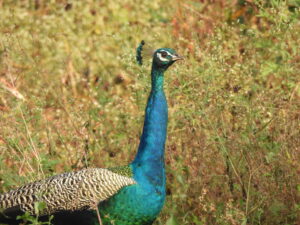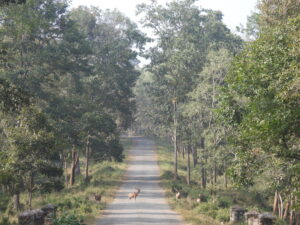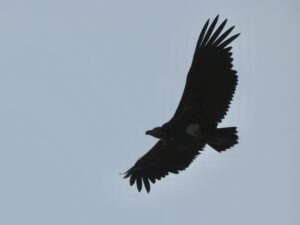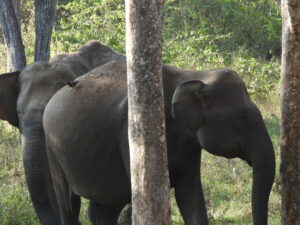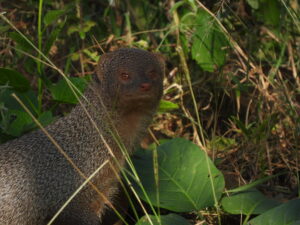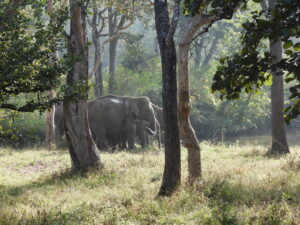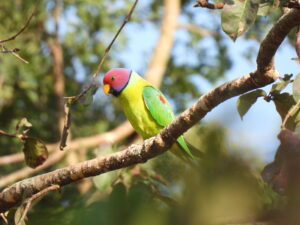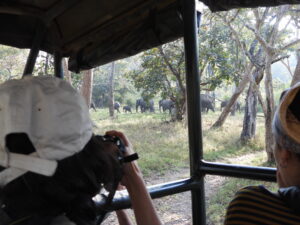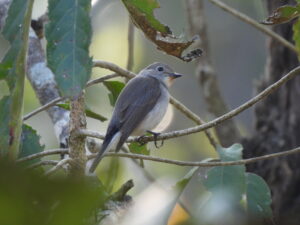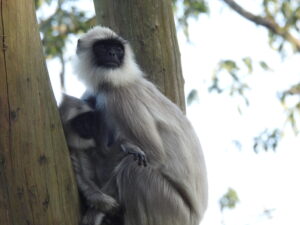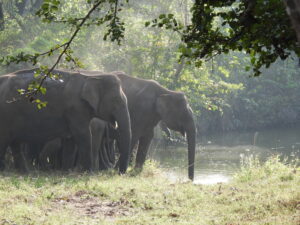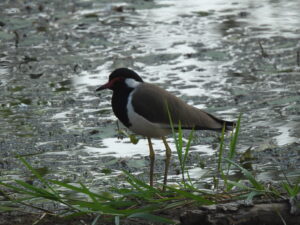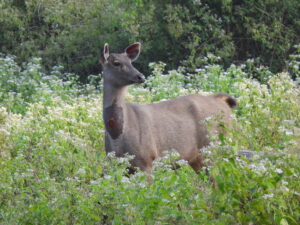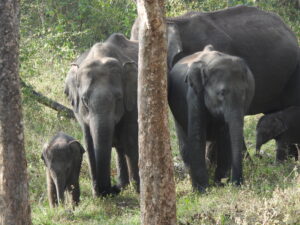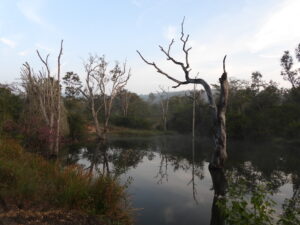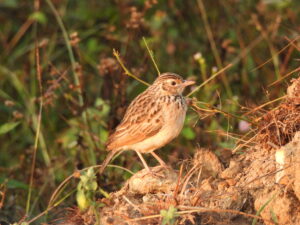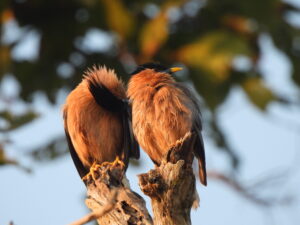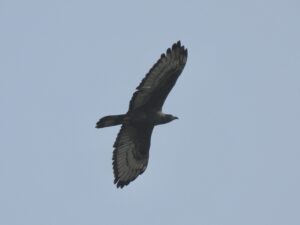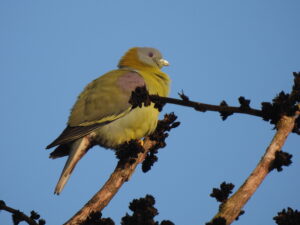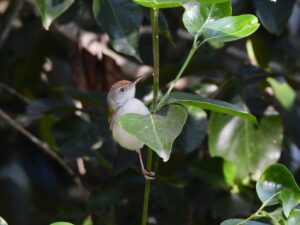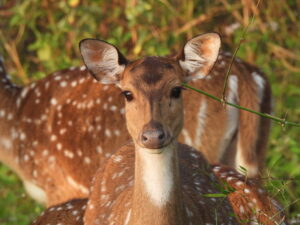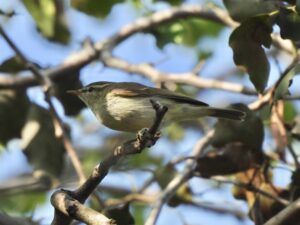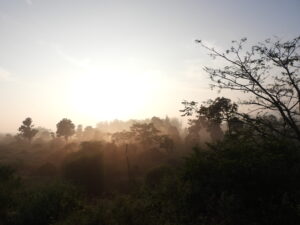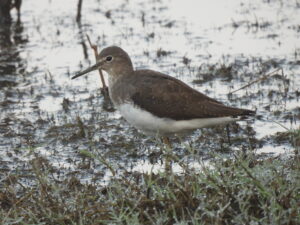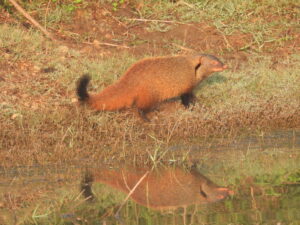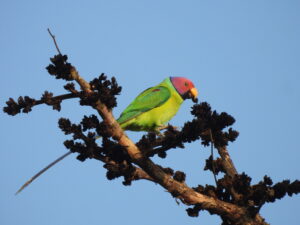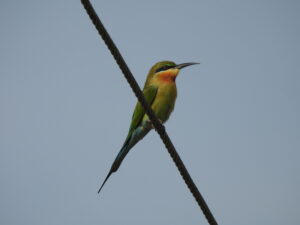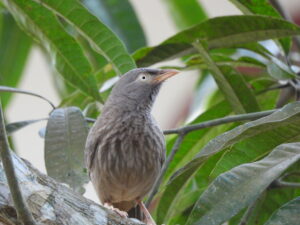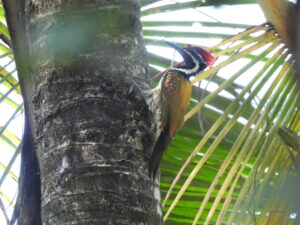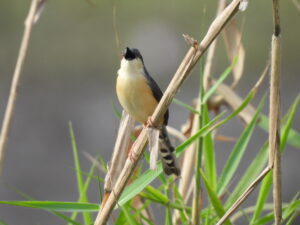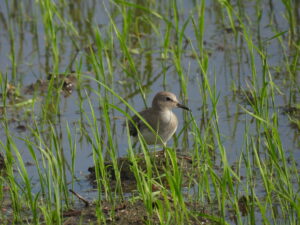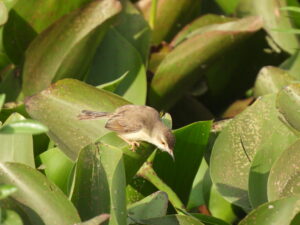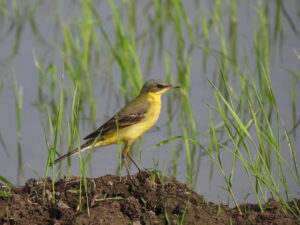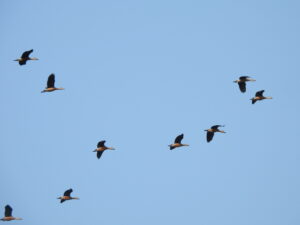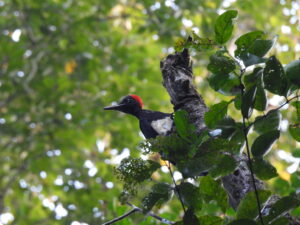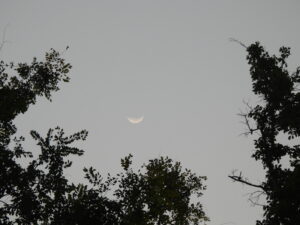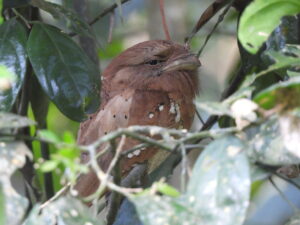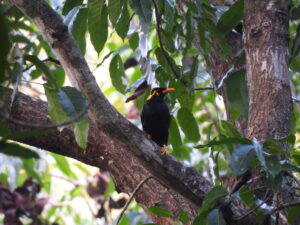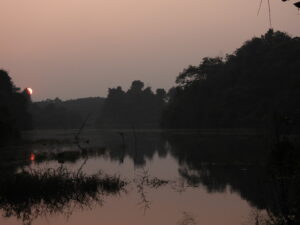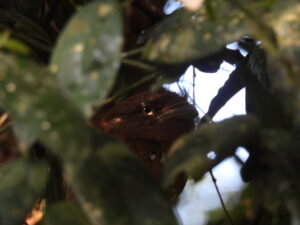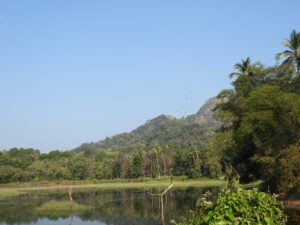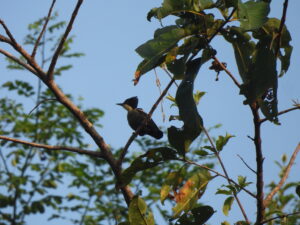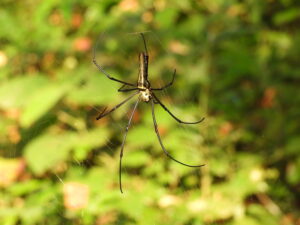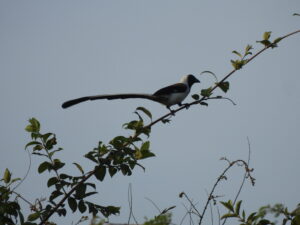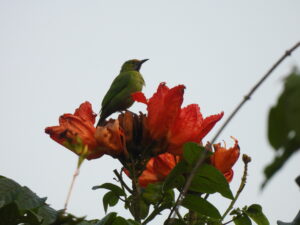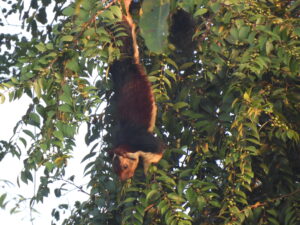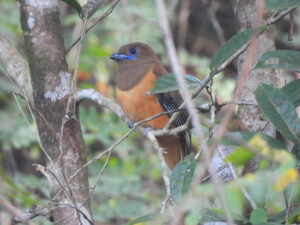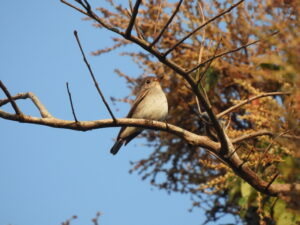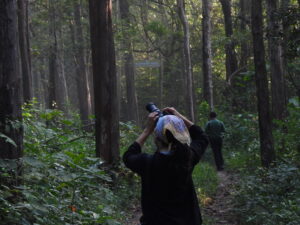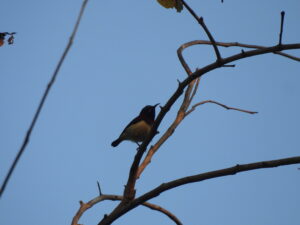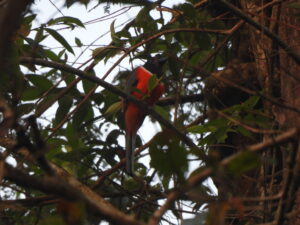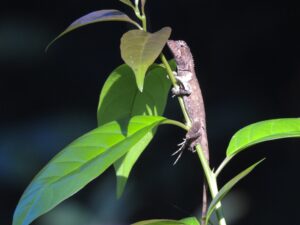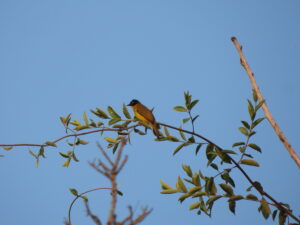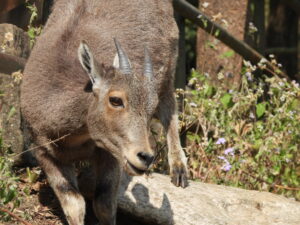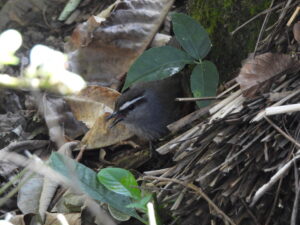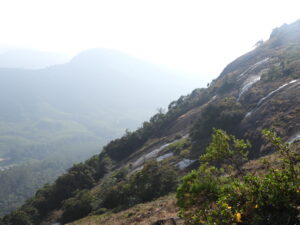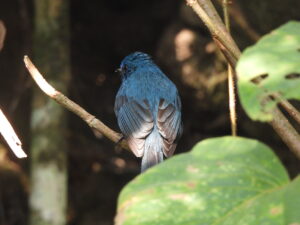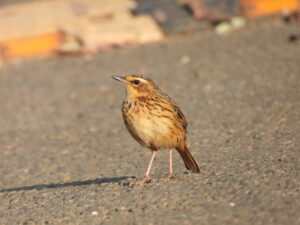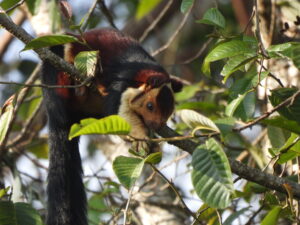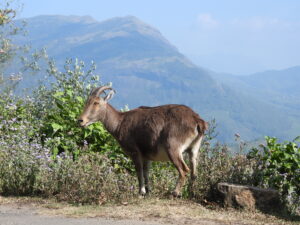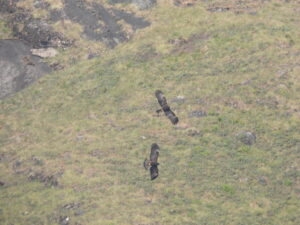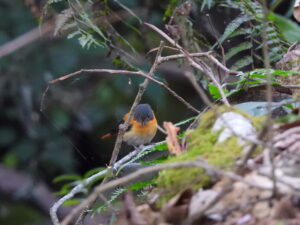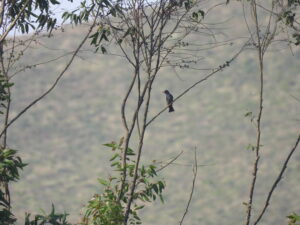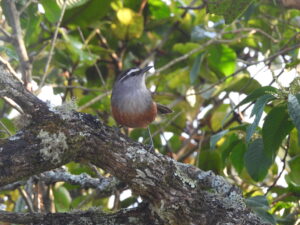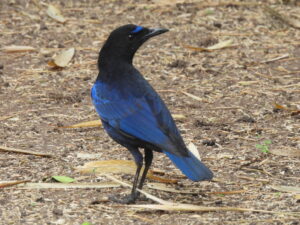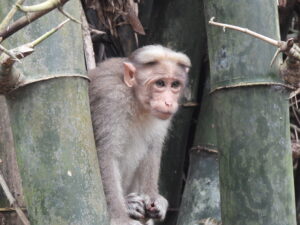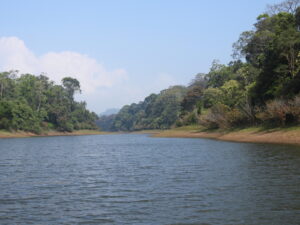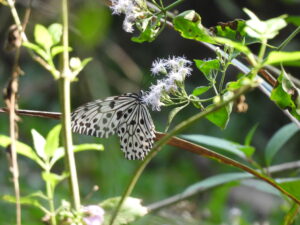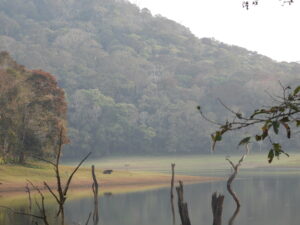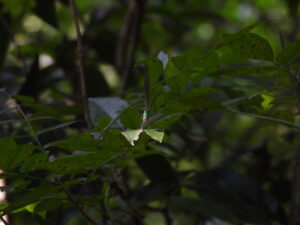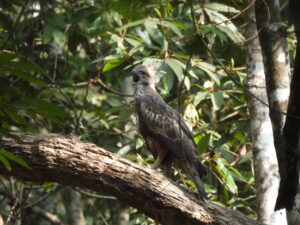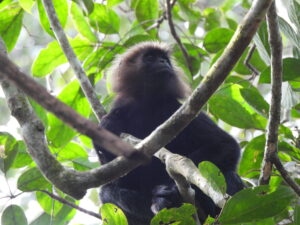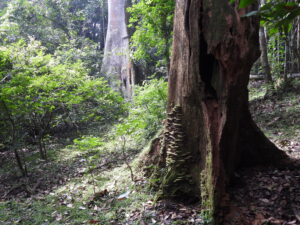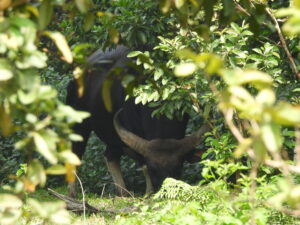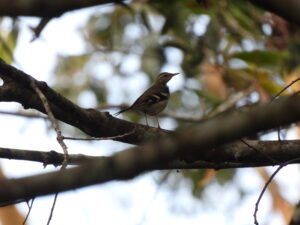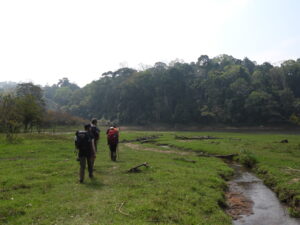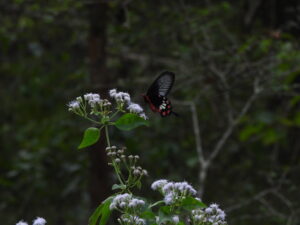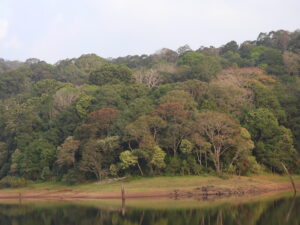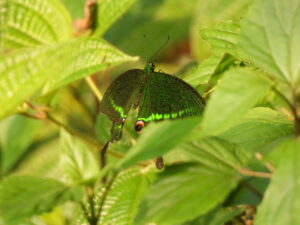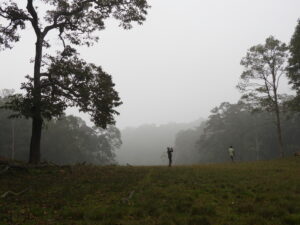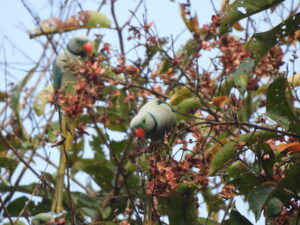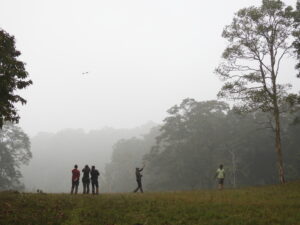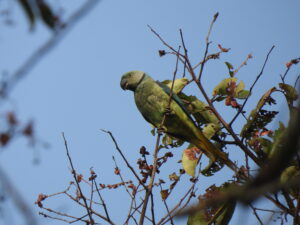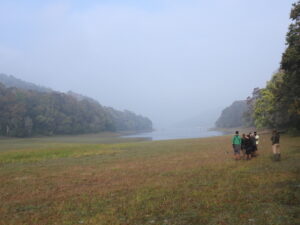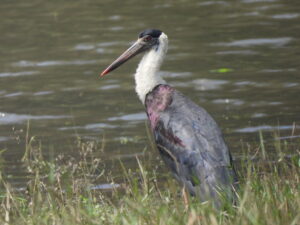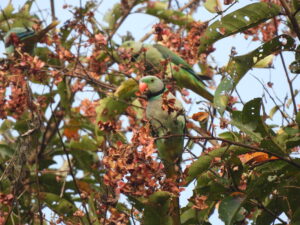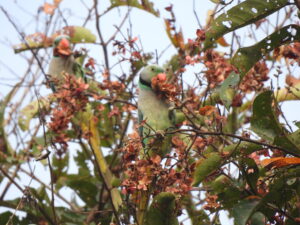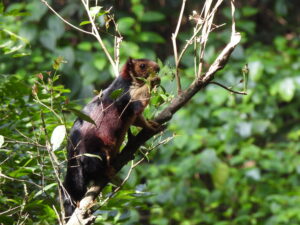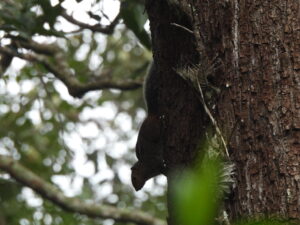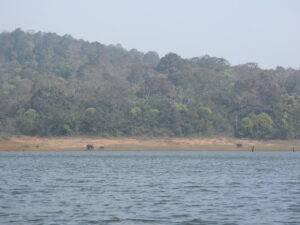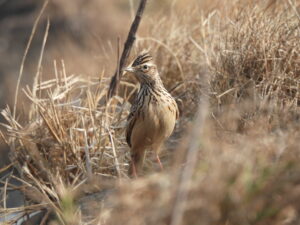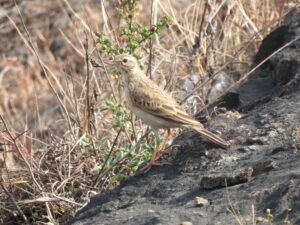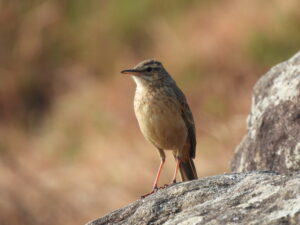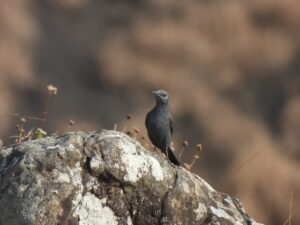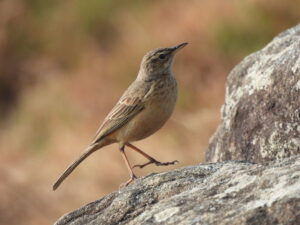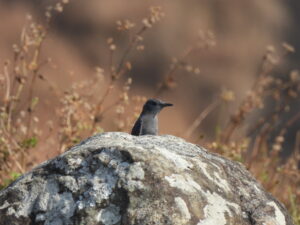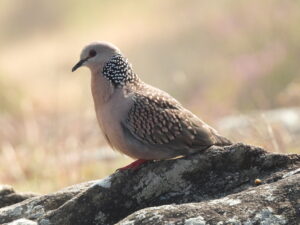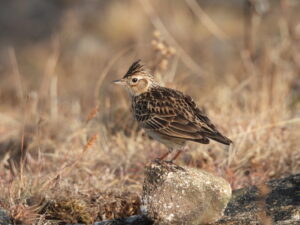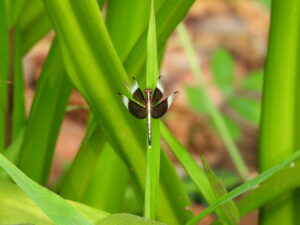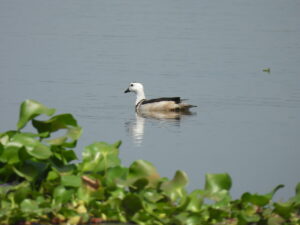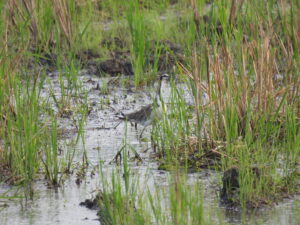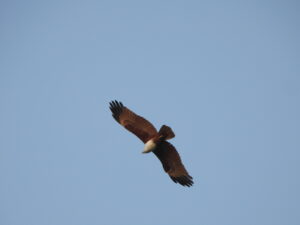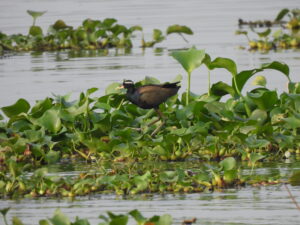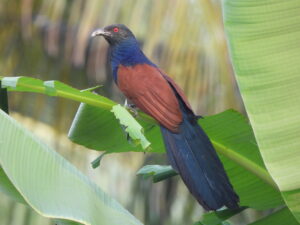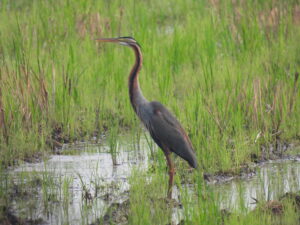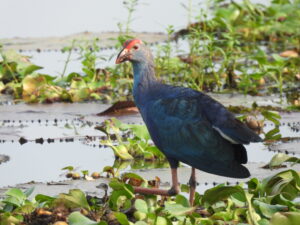India 2024 – 2025
Chronicle
29 Dec 2024 – 13 Jan 2025
Reflections in Periyar Nature Reserve, 9 Jan 2025
Day 1 Sunday 29th December 2024
I entered India at around 08:15 through Kochi International Airport after long connecting flights from Madrid via Istanbul and Kuwait. After almost an hour of queueing through immigration, Mebin and his brother Mercin bkindly greeted me at the arrivals gate. We enjoyed some dosa for breakfast at the airport surrounded by ubiquitous house crows. Then we discussed with our driver for the day about what to do, as the rest of the group would only arrive to India five hours later.
We drove some 35 minutes to a place called Kuttipara waterfalls. It is relatively close to the airport for a quick drive under these circumstances, but we had no expectations as Mebin had not been there before and there was no information of them on the internet.
Lagoon down the waterfalls, 29 Dec 2024
Kuttipara waterfalls
Stream running in small rapids and pools through degraded forest and croplands close to houses. The stream water falls into a lagoon down a cliff. Forest openings featured some fruiting trees attracting birds. Dragonflies, damselflies and butterflies were plentiful (see here).
We arrived after a stimulating drive in which my friends would explain many of the things we would see around the road. The waterfalls turned out to be not such, probably because the dry season decreased the volume of water of the stream. Trees grew thick around the road surrounding the water. As we walked in, women washed clothes in the river. The first bird seen was a striated heron on the hunt, first for Mebin that set the tone of the trip.
A first forest clearing provided good views of Indian golden oriole, greater racket-tailed drongos and a bronzed drongo. The call of the white-cheeked barbet quickly entered my personal repertoire and would be heard throughout the trip. A nice addition was a male Indian paradise flycatcher displaying its rufous morph, although hidden in the vegetation.
Following the stream downwards, a second clearing was more productive. A large shadow revealed a closeby juvenile changeable hawk-eagle soaring. We were on a cliff over a lagoon fed by the stream, although there was no clear path to continue walking and get down. We scanned the trees around the lagoon from our viewpoint and managed good looks of southern coucal, red-whiskered bulbul, red-vented bulbul and cinereous tit. A tree next to us had some berries on which two brown-capped pygmy woodpeckers fed. Several green warblers called continuously in the area.
We only walked a bit more down the stream over slippery rocks. A gray wagtail and several purple sunbirds were some additions. The stream was full of loaches and Danio fish. Throughout the morning, Mebin would share his knowledge of local damselflies, dragonflies and butterflies, making an effort to help me connect with the numerous species present in the stream. Some species were striking, such as the Southern birdwing — an endemic species and apparently the largest butterfly in India.
Soon after we headed back to the airport. The arrival of our friends was smooth and we were all together in the car by 14:00. Tired but excited, we enjoyed a fantastic lunch at a Malabar restaurant on the way. On the surroundings of this restaurant, in an urban setting, we connected with our first Indian pond-heron and blue-tailed bee-eater, and managed to spot a calling white-cheeked barbet for the first time. All these birds would become usual sights throughout the trip.
It got dark during our drive home. We rested intermittently, and the sunset sky provided amazing views of several flying foxes on the road. Some hours later, we met Mebin’s parents and went for some quick cloth shopping together. Women brought saris and men got kurtas.
Morning at Mebin’s, 30 Dec 2024
Mebin’s place
Detached house in a periurban area in Mannar village, close to the paddyfields. Several fruiting trees and flowers in the garden attract different bird species and squirrels.
An additional half an hour later, we made it to Mebin’s place. Mebin’s mom prepared delicious food for us and we tasted different fruits for the first time. We called it a day by midnight after a great first day, still excited to be together.
Day 2 Monday 30th December 2024
I woke up around 07:30 after a tight sleep and met Mebin out in his garden. He showed me different new species, including inquisitive jungle babblers, jungle myna, or black drongo. House crows, common mynas and Indian palm squirrels were also present. I also noted calling Asian koels, white-cheeked barbets and black-rumped flamebacks.
Waterbird frenzy in the paddyfields, 30 Jan 2025
Kudavellari paddyfields
An extension of the Kerala backwaters artificially disconnected from the sea. Freshwater allows cultivation of rice, and the area is covered in rice paddies and shallow lagoons. Numerous wetland bird species gather in impressively large densities in the area (see here).
We had a quick breakfast and Mebin’s dad drove us to Kudavellari paddyfields some 5 minutes driving from their place, where our friends would meet us later after resting. The scene was spectacular: a massive flooded plain on the left of a trail had concentrations of hundreds of foraging birds including great egrets, little egrets, medium egrets, painted storks, purple herons, gray herons and whiskered terns foraging in all directions. Locals worked on rice paddies, fisheries and rearing ducks, and would chat with us while we crossed by.
As we started walking, the right side of the path was covered in fields with very low water levels, where dozens of western yellow wagtails, wood sandpipers, little stints and Temminck’s stints foraged. These flocks were mixed with numerous little ringed plovers and few marsh sandpipers. A flock of black-winged stilts showed up too.
The trail itself gave some great views of birds sitting in poles, including blue-tailed bee-eater, Asian green bee-eater, ashy woodswallow, black drongo and Brahminy kite. On the bushes around the trail we connected with several plain prinias, a booted warbler and a clamorous reed warbler. A checkered keelback snake entered a bush by the trail and made an Indian bullfrog jump out of it, and we also saw an Oriental rat snake swimming.
Continuing the trail into the paddyfield, the right side transformed into a wide ditch covered in water hyacinth. Hundreds of whiskered terns flew by, and I spotted at least three very welcome river terns, which were the first for Mebin in his local patch. Scoping around, we also connected with several black-headed ibis flocks and another surprise: two Asian woolly-necked storks, one of which we managed to see once our friends joined.
The water hyacinth cover was favored by several birds. Besides large numbers of Indian pond-herons, we connected with moorhens, coots, gray-headed swamphens and both adult and juvenile bronze-winged jacana. Several pied kingfishers hovered for fish in a section of the ditch. A white-throated kingfisher and a juvenile black-crowned night-heron were seen only before our friends arrived.
Once the whole group was in and we managed to connect with most of the birds, we browsed the sky. A greater spotted eagle flew over, harassed by a Brahminy kite. Distant flocks of numerous birds — on the hundreds but hard to estimate — resulted in smart-looking small pratincoles, some of which eventually flew closer to us.
The heat scorched and we headed back home in two car lifts with Mebin’s dad. As Giorgio, Mebin and I stayed around, we connected with white-rumped munias, Asian palm swifts, black-headed oriole, Oriental magpie-robin, red-vented bulbul and purple-rumped sunbird. At home we enjoyed Mebin’s mom delicious homemade lunch and rested for some hours. Spending time out in the garden, a female Loten’s sunbird was a new addition.
In the evening we headed to Haripad train station with Mebin’s family. While waiting for our train, we enjoyed the silhouettes of different sized bats, including large flying foxes, in the sunset sky. A shikra and a jungle owlet were nice additions right at the station. By 18:50 we said goodbye and appreciated the hospitality of Mebin’s family and hopped on our train. Six bunk beds on an A/C wagon where we enjoyed some take-away mushroom masala and called it a day early. Heading north and crossing much of Kerala and a stretch of Tamil Nadu, we would reach Mysore in Karnataka some 17 hours later.
Day 3 Tuesday 31st December 2024
The long train journey would set us in the south end of Karnataka state, where the first leg of the trip would develop. This first leg would consist of several safaris on different spots, and our only time spent in a city in India — Mysore, the city of palaces.
We woke up by the time we were around Bengaluru and spend the whole morning chatting. For those who got some good sleep, the train turned out to be a comfortable means of transport, without the noise or jams of traffic and the freedom of stretching and walking if needed. Toilets and beds were available and, even if vendors walking through the vagons sell water, coffee, tea and food, we got some parotas and curries as takeaway food before embarking. The only con was that the A/C was too cold at night and the blankets provided were insufficient for some of us — some warm clothes could have done the trick.
Even from the train, black kites were incredibly numerous as we crossed populated cities, and we also spotted several three-striped palm squirrels and house crows.
The train finally reached Mysore just before midday. Tuk-tuk drivers touted but we decided to walk the short distance to our accommodation at KSTDC Hotel Mayura Hoysala. To our surprise, we bagged our first red-naped ibis on a small stream in the city center along with some Indian pond-herons.
The afternoon was about exploring Mysore, so we walked along the city center, went for lunch, and visited the main landmark of the city.
Dusk lights at Mysore Palace, 31 Dec 2024
Mysore Palace
Royal Palace and former official residence of the Wadiyar dinasty and the seat of the Kingdom of Mysore. It was built at the beginning of 20th Century following Indo-Saracenic architecture. It is currently the second-most visited landmark in India (see here).
The visit to Mysore Palace was a must and we enjoyed strolling through several decorated rooms and a massive durbar hall. Hundreds of black kites flew over the city, and the palace surroundings were no exception. We could even hear them from the durbar despite the noise from visitors.
After our visit, we walked around the garden for a while. We noted several jungle mynas, rose-ringed parakeets and house crows. Some people brought us to two elephants in the temple gardens, and we noticed a purple sunbird and several Indian gray hornbills on a large tree close by, which got us entertained for a while. A common hawk-cuckoo was also seen.
A dry tree by the gardens wall was the roost for dozens of birds, including chestnut-tailed starlings and rosy starlings. A white-throated kingfisher and a spotted dove were also seen. Good numbers of little swifts flew around the palace durbar in the sunset sky. We got incredibly close looks of black kites as they were unbothered of people.
We walked back to the hotel in the somewhat ordered chaos of Mysore. We had different local specialties for dinner in a closeby restaurant. Later, we picked up some local pastries, including delicious Mysore pak, to indulge ourselves on New Year’s Eve.
Day 4 Wednesday 1st January 2025
A new year begins. We set off early to start the year with fine birdwatching. The first birds noted in 2025 were calling rose-ringed parakeets and house crows heard from the room at 06:30. As we waited for our driver in the garden, we added several species including cinereous tit, pale-billed flowerpecker, red-whiskered bulbul and a small flock of small minivet, all in KSTDC Hotel Mayura Hoysala front gardens. Then we hopped on a car, stopped for some delicious dosa for breakfast on the way, and headed north of Mysore for about half an hour.
Friends look at the pelican colony, 1 Jan 2025
Ranganathittu Bird Sanctuary
Wetland area designated as Ramsar site around Kaveri river, just north of Mysore. It stands as the largest bird sanctuary of Karnataka. Numerous islets full of vegetation hold colonies of nesting pelicans and other birds (see here).
We reached Ranganathittu by 08:30, apparently its opening time. Already from the parking lot, we glimpsed several spot-billed pelicans and little cormorants, a small introduction of what the morning would be like. Two spot-breasted fantails and a coppersmith barbet were seen from the ticket office.
As there were six of us, the best deal was to get two special boat fees plus the camera fees. A special boat is a four-seat open boat ride for half an hour. The staff kindly allowed us to sit all together in one roof boat and combine the time, so we eventually had a one hour ride for that same deal.
The trees of the wetland host hundreds of spot-billed pelicans. Numerous black-crowned night-herons, little cormorants, Indian cormorants, little egrets and Indian pond-herons were also seen. On the way here we saw our first Indian peafowl from the car, and now several peacocks and peahens flew majestically from tree to tree.
The boat driver brought us very close to several marsh crocodiles, some swimming and some basking in the shore and on rocky islands. White-browed wagtails were territorial on these islands, and we also connected with red-wattled lapwings and two smart great thick-knees at close distance. Few river terns flew over the water and gave great views.
Looking at the sky provided also several surprises. We connected with shikra, red-naped ibis, painted stork, black-headed ibis, osprey, purple heron, Oriental darter and an Indian gray hornbill. A small flock of yellow-footed green pigeons passed over us. Hundreds of streak-throated swallows gathered together. A large flyby flock of bar-headed geese was an unexpected and welcome surprise.
The boat eventually crossed to the other side of the wetland, where good numbers of Eurasian spoonbills and Asian openbills rested in the trees along with spot-billed pelicans in their nest with chicks. Some trees had weaver nests whose builders we never saw. Instead, we saw pied kingfishers also next to the entrance of their nest. A fabulous stork-billed kingfisher passed by quickly. The bushes also provided some passerines, including clamorous reed warbler and an ashy prinia only I dipped.
The forest between the wetland and the lake was also plentiful of birds. We connected with beautiful male Tickell’s blue flycatchers, yellow-billed babblers, blue-tailed bee-eaters, greenish warblers, purple-rumped sunbirds, and an unexpected female Loten’s sunbird — locally rare. Unfortunately, only I got to see a smart white-morph male Indian paradise flycatcher. Right before entering the car, an Indian spotted eagle soared over the car park area.
We drove again past Mysore and headed to the different direction towards Kabini, next to Nagarahole Tiger Reserve. As soon as we arrived and checked in the dorm of Kabini River Lodge, we headed for lunch — on the way we spotted an Asian brown flycatcher — and left for an afternoon boat safari.
Deers by the backwaters, 1 Jan 2025
Kabini backwaters
Picturesque lake and rainforest area at the doorstep of Nagarahole National Park. Different resorts operate boat safaris on the backwaters, connecting with numerous mammals, raptors and waterbirds (see here).
Kabini river was quite birdy and provided scenic landscapes. Elegant river terns were present in good numbers. The shores had several greenshanks, red-wattled lapwings, red-naped ibises, white-browed wagtails and different egrets and herons foraging. Little cormorants were present, and several great cormorants nested on dead trees in the middle of the wetland.
We connected with numerous raptors, including several Brahminy kites and ospreys, lesser fish eagles at a nest, an Indian spotted eagle, a changeable hawk-eagle and a fantastic red-headed vulture, most sitting in branches. A brown fish-owl announced by the boat driver only provided untickable views of a large brown bird flying away.
Some shore areas featured open forest and were inhabited by packs of southeastern gray langurs and spotted deer. We connected with up to three Asian woolly-necked storks in these areas, as well as several flocks of Indian spot-billed ducks. At a certain point, three gray junglecocks showed up in the shore.
The alarm calls of spotted deer and Indian peafowl would make all boats gather — these screams announce the presence of predators. The adrenaline was very high, even if we did not connect with the animal. While we waited, I scanned different bird flocks and noted Eurasian hoopoe, chestnut-headed bee-eater, brown-capped pygmy woodpecker, common woodshrike and bronzed drongo, among others.
We returned back to the lodge at sunset, and the landscape became fabulous. Little swifts and Brahminy kites flew over. Suddenly, Amaia found a fantastic pair of Malabar pied hornbills that made the boat turn around last minute. Soon after, we reached land after several hours of a fantastic boat safari. Indian flying foxes gathered in the trees around the pier.
Sunset view from the deck, 1 Jan 2025
Kabini River Lodge
Resort on the shore of Kabini backwaters, with all commodities to enjoy a stay and visit Nagarahole National Park and surroundings. It is conveniently located in a large forest patch (see here).
We heard several nocturnal birds on our way to the rooms, including different owls and a Jerdon’s nightjar. We rushed to our rooms to grab our torches and went for a quick spotlight night walk before dinner. We connected with a nest of Eastern barn owls with at least two young chicks and the parents constantly visiting them.
We walked down to the lake shore, where we connected with different herps. Several reptiles walked in the litter, including Asian house gecko and spotted house gecko. We also spotted an Asian common toad and a common Indian cricket frog.
Walking back around the lodge forest, we connected with numerous wild boars and one of the owls we heard calling before. We walked in the dark as close as possible to the call, and switched on the light just to find an impressive mottled wood owl on an open branch few meters away. We could not believe our eyes and enjoyed this fantastic bird as a second one called from afar. At a certain point it flew away, getting lost in the forest.
Right before dinner, Mihika arrived to the lodge after a flight from Guwahati. Finally we were all together! We had some nice dinner and walked around to connect with the barn owls and wild boars before going to sleep.
Day 5 Thursday 2nd January 2025
I lost my sleep too early and left the room before 05:00 for some spotlighting. The night was more silent now that after sunset, and I only connected with several wild boars and a greater bandicoot rat, but no nocturnal birds were heard or seen other than the barn owls at the nest. I joined my friends at the safari pick-up point at 05:45.
Cool misty morning on the road, 2 Jan 2025
Nagarahole National Park
Protected area (National Park and Tiger Reserve) of 6.000 km2 within North Western Ghats moist deciduous forests. Its important densities of different large predators and other big mammals have set a network of safari options, but birds are also interesting (see here).
The open forest of Nagarahole featured different ponds and clearings where the safari cars and buses would stop and wait for signs of leopards and tigers. Indeed, just as we started, the driver of our bus pointed out fresh tiger prints on the dust road.
The safari provided different mammals, including large herds of spotted deer guarded by numerous jungle mynas, two cooperative ruddy mongooses and an elephant. We would again hear close alarm calls of spotted deer warning about big cats — and we would hear about leopard and tiger sights from other cars — but we were not lucky.
During different waits, we connected with yellow-footed green pigeon, Eurasian hoopoes, numerous white-throated kingfishers and jungle babblers, brown shrike, long-tailed shrike, Brahminy starlings and white-bellied drongo, among others. I noticed a Malabar giant squirrel climbing some distant trees.
Towards the end of the safari, I spotted an Oriental honey buzzard and a blue-bearded bee-eater only Mebin could also see. The driver stopped on the way back so we could snap some Indian peacocks, and he skillfully found a blue-faced malkoha skulking in some lantana bushes directly from the road.
On a side note, it is important to mention how cold it got in the morning safari. Not all of us were aware of it while preparing for this leg of the trip and left all sweaters and jackets at Mebin’s place in Kerala, and we regretted it in the cold humid morning, especially while the open safari vehicles were driving.
We arrived back to Kabini River Lodge at 09:30 and had some breakfast before check-out from our dorms. In the gardens of the resort I noted another Oriental honey buzzard, calling southern coucals, and a large flock of little swifts mixed with Asian palm swifts and an Eastern red-rumped swallow.
Sadly, part of the group started feeling sick on the journey between Kabini and Bandipur, probably due to some water intoxication, so some stops were necessary. On the way, locals spread horsegram legumes on the road so that cars would crush them and release the seeds inside of them — an illegal but widespread practice in Karnataka according to our driver. The fields on the way provided blue-tailed bee-eaters, black drongos, different shrikes and the first pied bushchats.
We would stay at Bandipur Safari Lodge for our visit to the area. We did not have much time after checking in our fantastic rooms, part of the Maharaja package that Mebin had booked for us. However, walking between the room, the golghar area for lunch and the safari pick-up point provided several birds. The song of coppersmith barbets and white-cheeked barbets was present. There were good numbers of Tickell’s blue flycatchers, purple-rumped sunbirds and greenish warblers on the bamboo next to our rooms. Once on our jeep waiting to depart for our first safari in Bandipur, I connected with a female common iora in the vegetation of the garden.
Hills and dust on the road, 2 Jan 2025
Bandipur Tiger Reserve
Protected area (National Park and Tiger Reserve) of 890 km2 within dry and moist deciduous forests in the foothills of the Western Ghats. More open and hilly areas than Nagarahole provide different landscapes to safari tours also focused on spotting large mammals (see here).
The forest in safari was drier and more open than that of Kabini, and some hills gave amazing views throughout our journeys in the safari jeep. Just as we started, Mebin pointed out a first crested treeswift and I found a small flock of birds including Indian swiftlets. A massive red-headed vulture circled over a small valley on the road.
We did not have the adrenaline rush of the alarm calls of preys announcing predators and alas we did not find any large carnivores. However, the highlight of the trip were prolonged views of a large herd of female and young elephants visiting a pond to drink under the golden lights of the evening. Sharing this with Mihika, who is a knowledgeable elephant researcher, was a long-awaited and extremely educational experience — she would explain many facts about the vocalizations we could hear, and about the role and behavior of different animals among the herd.
Throughout the road, some birds would stick to their territories and not move more than few meters among the afternoon — and most would be seen again at the same spot the following day. This included numerous white-throated kingfishers, several red-wattled lapwings and a white-breasted waterhen. A Malabar flameback had a nest on a dead tree in a pond, next to which foraged a brown-capped pygmy woodpecker.
We also enjoyed great views of sambar deer and two Indian gray mongoose. During the different stops, I would again pay attention to the birds foraging in the trees around. This paid off with different new species including white-browed fantail, taiga flycatcher, orange minivet, Malabar starling and Malabar parakeet.
The cold arrived as the sun started getting low and I would have appreciated warm clothes during the safari again. I was feeling unwell with a swollen, aching stomach and the driver kindly stopped the car on the roadside for me to go out as soon as we got out of the reserve. Sadly, I also got affected by the water poisoning and had a terrible evening from then on. I could not keep in anything I ate or drank for several hours, but once I felt empty I was weak enough to fall for a long, deep sleep.
Day 6 Friday 3rd January 2025
The last safari of the trip started early before 06:00, and again part of the group had to rain check to rest and recover. Fortunately, I found myself strong enough at wake-up time to wrap myself around a thick blanket and join. As we waited in the headquarters, we heard the calls of Indian nightjar, savanna nightjar and common hawk-cuckoo.
The sunrise provided awesome images in the beautiful landscape of Bandipur. We spotted several large flocks of spotted deer, as well as a large gaur and a couple of solitary elephants. We did not succeed with the cats after trying for hours, but connected with two stripe-necked mongooses as well as a ruddy mongoose, both close to a lake where we saw Indian spot-billed ducks and the first little grebe of the trip.
Many of the bird species found were the same as the safari the day before. Indian peafowl, plum-headed parakeets and yellow-footed green pigeons provided great looks. Two crested treeswifts flew over. We connected with some new species, including two confiding Jerdon’s bushlarks, common rosefinches, a male black-headed cuckooshrike, a flyby green imperial pigeon, a distant pair of Asian fairy-bluebirds and a green sandpiper.
After a light breakfast, a quick stroll around the gardens of Bandipur Safari Lodge provided two Indian white-eyes, a skulky Sykes’s warbler, a male orange minivet, an obliging greenish warbler and several birds seen on the day before including coppersmith barbets, Tickell’s blue flycatchers, Oriental magpie-robins, pale-billed flowerpeckers and purple-rumped sunbirds. My friends also connected with Indian silverbills.
Our driver waited for us at the reception and brought us to Mysore train station after buying some water bottles and takeaway food. He had kindly accompanied and helped us for the last days since our arrival in Mysore and we gave a heartfelt goodbye.
We took the train in Mysore train station back to Kerala after noon and rested for the rest of the evening in the A/C wagon. As we were feeling weak from the disease we got, I used this time to rest, start eating and recover.
Spotted deer (Axis axis) at sunrise in Bandipur Tiger Reserve, 2 Jan 2025
Day 7 Saturday 4th January 2025
We reached Haripad train station at 06:25. Mebin’s dad had arranged a car for us that dropped us in his place before 07:00. Reaching back home meant we had finished the first leg of the trip.
Mebin’s mom prepared some fresh coconut and sugar cane sauce for us to have. Before breakfast was ready, part of the group went to rest and Mihika, Mebin, Mercin and I headed back to the paddyfields again.
Mihika was nearly as shocked as I first was when we reached the paddyfields, when looking at the densities of terns, egrets and other birds in the water. However, the heat was unforgiving and the breakfast was getting ready so we only stayed around for a bit.
Differently to our first day, tens of glossy ibises foraged in the mud along with little egrets, medium egrets, great egrets, painted storks and black-winged stilts. On this same muddy lagoon I spotted two pheasant-tailed jacanas and a spot-billed pelican in the distance. Other additions included several Pacific golden plovers in the rice paddies mixed with other waders and my first ashy prinia, a long-awaited common bird that the rest of the group had managed to see by now.
We enjoyed some taro and purple yam for breakfast with a spiced coconut curd sauce and all headed to rest again. I roamed in Mebin’s garden for a while surrounded by numerous jungle palm squirrels, jungle crows and jungle babblers. The usual white-cheeked barbets and Asian koels called around.
The pair of black-rumped flamebacks I heard last here showed up, allowing close range views, as well as a pair of Loten’s sunbirds. Mebin’s dad spotted the local white-morph male Indian paradise flycatcher of their garden from their kitchen and quickly called me so that I could see it before it disappeared in the vegetation — what an awesome bird.
After lunch, Joséphine and I were feeling great and we joined Mebin’s family for an evening visit to some relatives close to Ranni, over an hour away in the foothill of the Western Ghats. We had a great time and enjoyed their hospitality, as they showed us many fruits and vegetables in their orchard and the process of making rubber out of rubber trees.
Mebin’s uncle brought us three to the rubber tree plantations and to the forest at dusk, where we saw plenty of house crows, two rufous treepies and a greater racket-tailed drongo. We also heard a common hawk-cuckoo calling from their home after sharing a delicious curry with roti.
We arrived back to Mebin’s place at night and part of the group paid a quick visit to the doctor to ensure they had the proper medicines for the upcoming trip.
Day 8 Sunday 5th January 2025
We had a rather slow morning and left Mebin’s house after 09:30. A large 17-seat bus waited for us and would be our vehicle for this new leg of the trip around the Western Ghats and surroundings.
We went through numerous villages, areca palm groves and rice paddies. After some hours of drive and a couple of stops for lunch and snacks, we made it to Thattekad Bird Sanctuary. Mebin’s dad had arranged our stay with the director of the sanctuary who agreed to accommodate us seven in the 4-bed watchtower of the sanctuary in the middle of the rainforest.
Morning lights in Thattekad forest, 6 Jan 2025
Thattekad Bird Sanctuary
Described by renowned Indian ornithologist Salim Ali as the ‘richest bird habitat on peninsular India’, this moist lowland forest surrounds the Periyar river. Several Malabar lowland rainforest birds can be connected among a network of trails in the woods (see here).
We hopped in a jeep along with two guides who would be with us throughout our stay in Thattekad. The jeep made several convenient stops, including a lake featuring dozens of lesser whistling ducks and a common kingfisher, as well as an office backyard where two Malabar giant squirrels and a Malabar gray hornbill foraged.
The third time we got goosebumps when the guides said “frogmouth” as the jeep stopped. Indeed, a female Sri Lanka frogmouth rested deep inside a bush just next to the road. We enjoyed prolonged walkaway looks of a stunning target species we were all extremely glad to see.
We made it to the watchtower, a dreamy spot located in the shore of a lake right in a forest clearing. We put our luggage in the top floor and heard to the birds around. Large-billed leaf warbler, southern coucal, vernal hanging-parrot, Indian paradise flycatcher, Malabar barbet and Malabar parakeet were all calling around the watchtower. The lake view provided good looks of a small flock of lesser whistling ducks and a stork-billed kingfisher working to catch fish. Malabar giant squirrels climbed in the trees around the tower.
We went on a short walk with our guides out of the fenced area around the watchtower. They helped us connect with different canopy-dwellers, such as white-bellied woodpecker, endemic Southern hill myna and Malabar gray hornbills. Flocks of birds mostly featured greater racket-tailed drongos mixed with some other species, such as yellow-browed bulbul.
Dusk arrived at the watchtower while dinner was getting ready. A recent incident with elephants and tourists made the guides hesitate to venture into the rainforest at night. Therefore, we could only stroll and spotlight inside the fenced area around the watchtower. We encountered a large huntsman spider, a couple of giant millipedes, numerous frogs of different species and an Indian black turtle underwater in the lake.
At night, the jungle songs invaded us. Calls of gray junglefowl, Indian pitta, jungle owlet, Oriental scops-owl, Jerdon’s nightjar and great eared nightjar could be heard around as it got darker and while we had dinner and chilled in the dining area. Bonnet macaques alarm calls were also heard, as well as a myriad of frogs and insects. The latest became so loud late at night that concealed the calls of birds, and we could hear different melodies all night long as we slept at the top of the watchtower.
Day 9 Monday 6th January 2025
I left the room still in the dark at 06:00 and again heard jungle owlets, Indian pitta and, as new species, Malabar whistling thrush and brown boobook. A medium-sized raptor quickly flew over the forest clearing and crossed the lake, and only me and the guides saw it — they pointed it out as a black baza, but this target species eluded us during the whole tour. Instead, I connected with a calling crested goshawk and later Mihika found a distant changeable hawk-eagle, both in the faint light of dawn.
We got ready and left the watchtower when the sun had risen. Our guides brought us to the jungle again. One of the first birds seen was a handsome male Malabar trogon, an endemic species and appreciated target. Numerous greater racket-tailed drongos monopolized the soundscape of the rainforest. On dead trees we spotted different dollarbirds and black-hooded orioles, while an Indian golden oriole called.
We arrived to a forest clearing where we waited for the black baza to no avail. Instead, we connected with several goodies including endemic yellow-browed bulbuls and flame-throated bulbuls, golden-fronted leafbirds, vernal hanging-parrot, cinereous tits, green warblers, a small flock of Indian swiftlets and white-cheeked barbets.
Our guides helped us connect with a cooperative female Malabar trogon which gave us prolonged looks at very low vegetation. A pair of heart-spotted woodpeckers was a great addition. Before leaving the spot, raucous calls revealed a handsome white-bellied treepie singing from a bamboo stand.
We soon walked back with no more birds to highlight, besides the female Sri Lanka frogmouth roosting at the very same branch of the same bush next to the road. Our guides prepared semolina for breakfast and a Bonnet macaque stole some of our leftovers. The jeep soon picked us up to leave Thattekad.
We quickly stopped on Thattekad headquarters to quickly buy some souvenirs when the lady at the counter informed us we were on the local newspaper. Our chat with Thattekad’s director the day before unexpectedly made it to the news in the event of India Bird Day. Somebody kindly gave us their own newspaper so that we could keep it.
We spent the whole morning on the road and had little incidents. As we rode up through the sumptuous roads of Western Ghats, part of the group felt some motion sickness. At a certain point, we also had to switch drivers as ours fell sick too. We reached Munnar for lunch an hour and a half later than planned at 14:00, where we bagged the first house sparrows and dusky crag martins of the trip. After lunch we quickly headed to Eravikulam headquarters about an hour later.
Nilgiri tahr in its habitat, 6 Jan 2025
Eravikulam National Park
Protected area in the Western Ghats covering montane grasslands and sholas (montane forest patches) at around 2.000 m above sea level. Ubiquitous and extremely range-restricted Nilgiri tahrs are the emblem of the park, as well as endemic shrubs covering slopes during their flowering period (see here).
We had a booking arranged and skipped the queue, but an entrance ticket is mandatory. A bus collects tourists and drops them 4 km from the headquarters up in the mountain at over 1800 m altitude. From the drop-off point, there is a 1 km road uphill open for walking. Tourists are last admitted at 16:30 but the last bus back to headquarters departs at 17:30.
There are several targets we had in Eravikulam. The most important one was the Nilgiri tahr, an endemic goat belonging to the monotypic genus Nilgiritragus which os today mostly restricted to Eravikulam and few surrounding areas. We did see them, everywhere. The tahrs were in good numbers all along the walkable road. So much so that people got too comfortable with them. The signs of “love them, don’t touch them” were not enough, and despite the tahrs did not seem too bothered, observing such an evolution gem reduced to a school farm animal was rather upsetting.
Something similar happened with birds. Besides a calling Malabar whistling thrush at the drop-off point, the first connected bird was the range-restricted Palani laughingthrush, a bird skulking like a mouse in a short shrub. Every time all of us stopped for some seconds and looked at a single point, we would draw the attention of dozens of tourists, many of whom would unfortunately not be too respectful and scared away some of the birds by getting too close or shout too loud. Considering this, it took some time and effort but we finally managed to get very good views of different Palani laughingthrushes along the way.
Other skulkers could also be seen in the woody shrubs scattered along the open grassy slopes on the way. These included numerous Oriental white-eyes, red-whiskered bulbuls and greenish warblers, some Tickell’s leaf warblers and a brief view of a male Nilgiri flycatcher.
Farther up, an opening served as a viewpoint to the first proper shola grasslands of this short hike. From above we could see numerous Nilgiri tahrs, as well as a distant troop of Nilgiri langurs. Some ferns between the grasses featured pied bushchats and red-whiskered bulbuls. Only Mihika and I managed to connect with a secretive small flock of painted bush-quails briefly crossing an opening as they walked concealed in the tall grass. Two Eurasian kestrels hovered high up in the mountain.
The road crosses a patch of shola forest where we connected with several goodies. Warblers and red-whiskered bulbuls were abundant, but we also saw Palani lughingthrushes, gray-headed canary-flycatcher and Nilgiri flowerpecker.
The top part of the road before it is closed to public passes through a good shola grassland area, prime real estate for the Nilgiri pipit. An officer working at the end of the road said he had seen one moments before we arrived, but all we saw were pied bushchats. Red-rumped swallows and few hill swallows passed by. Two impressive black eagles gifted us with a prolonged show of acrobatic flights in the ridges of the mountain above us. After some time scanning the grassland, a Nilgiri pipit showed up in the middle of the road, providing great closeup views.
On the way back, a stunning female black-and-orange flycatcher performed for us in the shadow of the shola forest. We had secured our main targets of Eravikulam and used the spare tome before the last bus to contemplate the Nilgiri tahrs now that most tourists had left. If the global population estimates are accurate, we might had seen about 2 % of all Nilgiri tahrs left in the world during the afternoon.
After an uneventful bus ride back to headquarters we drove back to Munnar. On the roadside, a massive male gaur gave us close views as it grazed in peace, ignoring the chaos of the road just few meters next to it.
We picked up Daniel Raju, a renowned herpetologist and friend of Mebin, who had been instrumental in the preparation of this trip although his tight schedule could not allow him to share more time with him. He came with us to our accommodation at Tea County Resorts and we chatted about our wildlife encounters during the trip for a while.
The rest of the afternoon was all about chilling in the hotel. We ordered some food from hotel room service and had dinner while we watched Netflix all together. The temperature at night in Munnar can get significantly low, but we enjoyed some cold atmosphere for a change.
Day 10 Tuesday 7th January 2025
I woke up at 07:30 and I could already hear the Malabar whistling-thrush calls from inside the room. I left for an early morning walk. Only with the morning lights did I realize how great the gardens of the hotel are for birds.
Resort gardens, 7 Jan 2025
KTDC Tea County Resort
Very comfortable accommodation in Munnar, renowned for its tea production, cool weather and stunning landscapes. Very well connected to the main attractions in town (see here).
As soon as I got out, and among the vocalizations of numerous greenish warblers, I noticed a calling Tytler’s leaf warbler. Red-whiskered bulbuls and jungle mynas were numerous. I also connected with several Indian scimitar babblers, Palani laughingthrushes, red-vented bulbuls, Blyth’s reed warblers, gray wagtails and a fine male blue-capped rock thrush. A small flock of endemic black-throated munia were a welcome addition.
We had a continental breakfast at the resort restaurant and a long-tailed shrike was being harassed by red-whiskered bulbuls in the garden outside the window. Heading out from the room for check-out, I also noted a common iora and several orange minivets.
We hit the road again and left Munnar. Our driver stopped on a tea plantation so that we could see the plants from close. Hill swallows, dusky crag martins, pied buschats and gray wagtails inhabited these plantations. The views all around were breathtaking.
Several hours later, we had a quick lunch in Thekkady, at the border between Kerala and Tamil Nadu, and entered the area of Periyar National Park at about 16:30 through our hotel.
Tree house in the lodge, 8 Jan 2025
Thekkady Bamboo Grove
Lodge composed of numerous bungalows at the entrance of Periyar Tiger Reserve. Most activities and tours can be arranged on site at reception. The lodge gardens are surrounded by a wet grassland and the forest edge (see here).
Oriental magpie-robins and Blyth’s reed warblers foraged in the gardens around the huts where we would stay overnight. Flocks of ashy drongos attracted different birds, including common ioras and red-whiskered bulbuls. My friends found a Malabar whistling-thrush foraging between the huts, close to where several Bonnet macaques unfortunately broke into our bag of bananas. As the bird activity was promising, we checked for available activities but none were available that late.
We went for a short walk around the grassland surrounding the hotel gardens. Cows grazing were escorted by Eastern cattle egrets and jungle mynas. When the sun set, “brain-fever” calls revealed a common hawk-cuckoo. Numerous pin-tailed snipes showed up at dusk flying into the grassland, and we walked around trying to get a proper view of them on the ground before flushing them. Two jungle owlets foraging together gave prolonged looks on a tree between the grassland and the road.
Later at night, we had booked the jungle scout package to walk in the night throughout the forest. Unfortunately, the group had to split as the scout is offered for groups up to six people — I joined Mihika and Amaia, while Valeria, Joséphine, Mebin and Giorgio went on a different route. However, this night walk resulted to be extremely productive, fortunately for both groups alike!
While we waited for the activity to begin, the calls of numerous Oriental scops-owls could be heard around us. After 22:00 we started walking into the forest. Sambar deer were frequently found throughout the walk. I spotted some mammal standing up in the canopy — the guides were not too knowledgeable of animals other than large mammals, but they allowed us to point at it with their powerful spotlights. We managed to get testimonial pictures that provided the surprise: a Indian giant flying squirrel, one of the main night specialties of Periyar!
Besides numerous sambar, we also secured looks to a Northern red muntjac (pointed out as barking deer by guides) and two encounters with Indian chevrotain (mouse deer), another specialty of these walks. We also found several gaurs at a safe distance. Bird-wise, we noticed an Indian scops-owl calling among different frogs, insects and the numerous Oriental scops-owls heard during the walk.
We approached a river where the spotlight revealed a Jerdon’s nightjar and soon after headed back. An Indian porcupine foraging on the river bank was an exciting addition to the mammal list. The walk back took a bit longer than expected, as we encountered several gaurs foraging by the trail well after midnight and had to dodge them by walking off path to ensure safety.
We shared our wildlife encounters with our friends and were all in great mood as we saw mostly the same species. The other group had great looks at the flying squirrel — the best their guide had ever seen. Additionally, they saw a lone female elephant whose calf had recently died and an Asian palm civet.
Day 11 Wednesday 8th January 2025
Today marked the day when the group became of six people again. Sadly, Mihika would depart today to catch a flight back home in Assam. We shared breakfast together and she would then stay the morning by herself in Periyar, where she took a safari boat ride before departing to Kochi.
We all took it relatively slowly to get some rest as the day ahead would be hard for those of us staying. In the morning, I got to finally see and shoot the Malabar whistling-thrush all my friends had seen in the garden by then. Today would be all about hiking through Periyar.
Surreal reflections of Periyar at sunset, 8 Jan 2025
Periyar Tiger Reserve
Protected area (National Park and Tiger Reserve) of 925 km2 covered in moist tropical forests within the Cardamom hills in the Western Ghats. A large lake complex is surrounded by grasslands flanking the rainforest, offering dreamy landscapes. The park is also notorious for its flora diversity (see here).
The Tiger Trail package consists of a hike to a camp site in the middle of the rainforest where one can stay for one — as we did — or two nights. The trail involves bringing your own luggage for a route of 5 km to the boat departure site, where a bamboo raft leads the group to the second part, a 6 km walk towards the camp, again reached after a bamboo raft ride. We had the company of an armed field officer and a watcher.
An important thing to note is that the trail name might be misleading. While there surely are tigers in Periyar, the officer explained that he has only had eleven encounters during his seven years of work there, meaning that chances are much lower than in Bandipur or Kabini — where sights are almost daily. However, wildlife encounters and exquisite landscapes made this trail everyone’s highlight of the trip.
The first stage of the trail takes place in the forest between the lake and the road between the headquarters and the boat pier. We connected with several lifers including lesser yellownape, rufous babbler and long-awaited orange-headed thrushes foraging. The guides made several stops to show us a tree with massive buttress roots and a gallery inside where lesser woolly horseshoe bats roosted, as well as the incense flowing out of the bark of a tree when lit with a flame.
We took a break at the boat pier, where we had ice cream at a conveniently located canteen with a view to the lake. The female elephant that part of the group saw last night was again foraging lonely in the opposite bank of the lake. All around us, a large troop of naughty Bonnet macaques seemed organized to get the most food out of tourists.
The second phase of the trail was the most scenic. Dense forest combined with open grasslands offered good views of mixed-species flocks featuring ashy drongos, orange minivets, white-bellied treepies, velvet-fronted nuthatches, black-throated munias and other species. Chestnut-headed bee-eaters proved quite abundant. A pair of smart gray junglefowl provided walkaway views. As of new species, we connected with several forest wagtails and a brown-breasted flycatcher.
As we continuously stopped to enjoy the views and the birds, we only reached camp at 14:30 to a fantastic rice with sambar for lunch. Nilgiri flowerpeckers, jungle crows and wild boars continuously visited the vegetation around the campsite, while the great location gave us a great viewpoint to scope for distant mammals coming to drink to the lake.
The accommodation was rather comfortable: a camp surrounded by a ditch with a kitchen, toilets with cold bucket showers, a living and dining area and three built gazebos with tents equipped with pillows, mats and sleeping bags. The temperature at night was comfortable so there was no problem in that sense.
In the evening we walked a circular route for just over 2 h along the forest further into the reserve from the camp. This walk helped us connect with Malabar barbet, white-bellied treepie and again many bee-eaters, minivets and drongos. The highlight however were very large herds of gaurs on the grassy shores of the lake before the forest. This walk yielded some of the most stunning landscapes of the trip, a scene that will surely remain in our minds forever.
Once we came back at sunset, we were strongly advised to not leave campsite after dusk. However, the camp viewpoint was enough to connect with wildlife. Indeed, we would end up watching herds of gaurs and elephants with cubs from camp throughout our stay in this awesome location, even a stripe-necked mongoose at some point. Wild boars roamed just on the other side of the camp ditch all day long, being especially notorious at night.
At night, we connected with several great eared nightjars calling. Besides that, we spent time with the officer who kindly and patiently taught us Malayalam script before dinner.
Day 12 Thursday 9th January 2025
The Tiger Trail continued early in the morning as we prepared to leave with the first lights. It was somewhat foggy and we headed again to the forest behind the campsite. The amound and diversity of mixed-species flocks was again striking, featuring species not seen the day before as rufous treepie or ashy woodswallow and new species for the trip as black-naped monarch and the endemic Malabar woodshrike. The top sight of the walk were a flock of cooperative Malabar parakeets feeding on a tree in the open. Gaurs and elephants were seen again from camp.
After breakfast, we packed the luggage and carried it to the bamboo raft. We walked the 6 km back to the boat pier again. Nilgiri langurs and Malabar giant squirrels were seen throughout the trail, as well as forest wagtails, Malabar gray hornbills and common hawk-cuckoos, among the frequent flocks of drongos and other species.
The lake was most productive in terms of birds. On other walks, we readily encountered red-wattled lapwings and gray wagtails besides cormorants, egrets, pond-herons and the occasional darter. This time, we could also see at least three different Asian woolly-necked storks, a small flock of paddyfield pipits, a common sandpiper, two Oriental honey buzzards and a lesser fish eagle.
A park bus transfered us back to the headquarters, where our car waited for us. We had lunch in Thekkady and left Periyar for good, all satisfied and happy.
The ride back home would take well over 4 h. Wisely, and while most of us slept, Mebin decided to stop by at a nearby viewpoint just 4 km off road.
Rocky grassland and scrub at the top, 9 Jan 2025
Parunthumpara Viewpoint
Awesome viewpoint some 25 km away from Thekkady, offering 360 views. Its name sands for ‘Eagle Rock’. Numerous passerines forage on the short grass of the rocks (see here).
Extremely short dry grass covered an otherwise rocky mountain landscape. Besides ubiquitous red-whiskered bulbuls and spotted doves and several pairs of pied bushchats, this area provided some new goodies. We got terrific views of Oriental skylarks and paddyfield pipits. Among those, I pointed out a long-billed pipit. Two juvenile male blue rock thrushes were an unexpected delight to all of us.
The road conveniently passed by Erumeli during the Sabarimala pilgrimage. We had encountered tens of Hindu pilgrims walking barefoot from long distances but nothing compared to driving through Erumeli at this time of the year. The road passed by the Vavar Juma Masjid, a site intertwined with the rich traditions of the Sabarimala pilgrimage which has taken place during our trip. Located 45 kilometers from the legendary Sabarimala Temple (the final destination of the pilgrims), Erumeli stands as a testament to the religious harmony that Kerala is known for. The mosque, dedicated to Vavar — the muslim companion of Lord Ayyappa — is a key stop for Hindu pilgrims. Devotees of Ayyappa visit this sacred space to pay their respects to Vavar at the mosque. Music, noise and men painted in vibrant colors filled Erumeli. After this enlightening experience, we eventually reached home at dusk and rested for the rest of the night.
Gaur (Bos gaurus) at sunset in Periyar Tiger Reserve, 8 Jan 2025
Day 13 Friday 10th January 2025
Waking up down by Mebin’s place meant that the second leg of the trip visiting the Western Ghats was over. Today was the set off date for the third and last part of the trip, which would be radically less nature-oriented than the previous.
Starting off today, we headed early to CMS College in Kottayam, Mebin’s alma mater about an hour away north. On the way, crossing some paddyfields, we again spotted two river terns. As usual on the road, pond-herons, black drongos, jungle crows and jungle mynas were seen in good numbers.
The staff at the Department of Zoology greeted us at CMS College upon arrival. We were invited speakers to an International Seminar about Conservation Biology and Ecological Research during the morning. We got to visit the facilities of the Department and walked around the gorgeous gardens of the campus. We all shared some of our research lines with bachelor’s, master’s and PhD students. Our insights on different topics were greatly appreciated by students and lecturers alike. Besides, we also enjoyed hearing more about each other’s work.
Mebin’s family joined us at campus. To celebrate Mebin’s mom birthday together and rest on the last stretch of our trip, we were all transferred to Kumarakom, merely 20 minutes driving east towards Vembanad lake. We checked-in at KTDC Waterscapes right at time for a fantastic lunch on a stilt-house restaurant.
Views from the pool, 11 Jan 2025
KTDC Waterscapes
World-class resort with still house bungalows at the shore. of Vembanad lake in Kottayam area. The lake view from its infinite pool overlooks the numerous bird flocks hovering over the water and foraging in the water hyacinth mats (see here).
We were all allocated in three-bed stilt houses. From there, we got terrific views of the pool and Vembanad Lake shore, partially covered in water hyacinth mats. While some of us went for a speedboat ride or a massage at the hotel spa, others spent time at the pool until dusk, all surrounded by tens of whiskered terns, pond-herons, gray-headed swamphens and Brahminy kites. The occasional flock of small pratincoles, medium egret, purple heron or Indian flying fox were also seen. A smart-looking stork-billed kingfisher flew back and forth between some coconut trees close to the pool.
The day was all about relaxing and having fun together. As we have had a copious late lunch, part of the group went out for fruits and snacks for everyone to eat by the pool. In the meantime, as it was already dark, we spotlit the canals of the hotel — numerous Indian black turtles shared waters with a variety of unidentified fish. Amaia and Giorgio glimpsed a chequered keelback snake while others noticed several insectivorous bats under the roof of our bungalow. The highlight of the night was a Kerala mud snake coming out of an underwater crevice by the restaurant boardwalk to catch fish.
Day 14 Saturday 11th January 2025
We had an early start at KTDC Waterscapes so that we could reach the main gate before 07:00. It had rained overnight for the first time throughout the trip. In front of the stilt houses, looking at Vembamad Lake, we quickly connected with numerous whiskered terns, great cormorants, pygmy cormorants, pond-herons, medium egret, great egret, cattle egret, purple heron, Brahminy kites, koels and two small pratincoles. The stork-billed kingfisher again flied in front of the pool and three black-rumped flamebacks creeped on a dead palm tree.
From the entrance area of KTDC Waterscapes, several signs mark the entrance to Kumarakom Bird Sanctuary, less than 10 min away from our rooms.
Vegetation bordering the sanctuary, 11 Jan 2025
Kumarakom Bird Sanctuary
Bird interpretative route located right at the entrance of KTDC Waterscapes. Its trail goes through a lowland riparian forest with some mangrove trees and few clearings overlooking the lake. We found an owl roost some 10 min walking from the entrance and heard that a stork colony can be seen from the last tower we never visited (see here).
We slowly walked for a couple of hours through the one-way trail, connecting mostly with common species: greater racket-tailed drongo, jungle crow, common tailorbird, pale-billed flowerpecker, jungle babbler, purple-rumped sunbird and Loten’s sunbird. Unfortunately, the dense vegetation surrounding the trail did not allow good looks to most of these birds.
Most of us were already heading back to the pool for some morning indulgence before breakfast. I got brief but fantastic views of a rufous male Indian paradise flycatcher at the entrance of the bird sanctuary. However, Amaia and Giorgio had stopped at some point and were not coming back. Indeed, Amaia had found two roosting brown boobooks, and we enjoyed great views once we all walked back to the forest.
We took it easy through the morning, swimming and enjoying a great breakfast with views. After packing, we were transfered to a pier nearby where a houseboat would bring us throughout Vembanad Lake for the entire day.
Houseboat in the lake, 11 Jan 2025
Vembanad Lake
Largest lake in Kerala, covering some 230 km2 of shallow waters bordered by different important cities including Kochi, and connected to the Laccadive Sea by different canals. Part of its surroundings lies below water (and sea) level, an intensely agricultural area irrigated by the lake after which Kerala receives its name of the ‘rice bowl of India’ (see here).
The concept of the houseboat is quite attractive for tourists: a sailor and a cook are the only company for a private boat for a day, with A/C rooms, a fully equipped kitchen and a terrace with views, all while sailing through extremely calm waters in the warm weather of the backwaters. Indeed, this has become one of Kerala’s signature tourist activities. And for us, it was a great idea to spend some last quality time with Mebin’s family.
As we entered the boat, we scoped the water hyacinth mats. We got the first looks of cotton pygmy geese, a long-awaited species for part of the group. Gray-headed swamphens and whiskered terns were numerous, and several lesser whistling ducks rested in the distance.
Sailing through the lake, we enjoyed cracking views of Brahminy kites, osprey, blue-tailed bee-eaters, white-throated kingfishers and other typical wetland species. Flocks of glossy ibises flew over, while a large flock of barn swallows resting in a wire featured an Eastern red-rumped swallow. All these birds while feasting on great local food including grilled and marinated pearl spot, the state fish of Kerala.
We improved the views of bronze-winged jacana, with several adults in the water hyacinth mats, as well as some very distant pheasant-tailed jacanas with non-reproductive plumage. Once out of the boat, the rice paddies around the pier featured wood sandpipers and yet another pheasant-tailed jacana at a closer distance. A southern coucal provided us the best views of the species in the trip as it chewed on banana leaves.
We were transferred to Mebin’s place in the evening. We stopped for dinner at a restaurant featuring the family’s favorite porotta and visited some shop for souvenirs. As it started drizzling — which caught us outdoors for the first time in the trip! — we were picked up home and quickly left to bed.
Day 15 Sunday 12th January 2025
Our last full day in India together started slowly at Mebin’s place. Asian koels, white-cheeked barbets, jungle crows and jungle babblers were seen and heard around as usual.
We dedicated the day to slowly pack our luggage and find spices and nuts for our families and friends back home. We got the chance to attend a wedding from Mebin’s distant relatives and lunch there. This added Asian palm swifts, ashy woodswallow and pale-billed flowerpecker in the garden of the church.
After visiting some family friends in the afternoon, we said goodbye Mebin’s family, to whom we are extremely thankful for the organization of this trip and their heartfelt hospitality. The journey towards Kochi towards our departure yielded numerous house crows, blue-tailed bee-eaters and Indian flying foxes before it got dark. We had dinner next to the airport, checked-in at a cozy Airbnb in the surroundings and soon called it a day.
Day 16 Monday 13th January 2025
The delegation from Helsinki left the Airbnb very early in the morning. Amaia and I would still spend the morning with Mebin at the house, where we enjoyed delicious fresh coconuts and guavas as our last breakfast in India surrounded by Loten’s sunbirds and white-cheeked barbets in the frontyard. Right before noon, the three of us were transferred to Kochi International Airport. Amaia and I bid Mebin farewell and eventually left at 14:00 for our flights to Barcelona and Madrid respectivelly, for both of us via Bahrain and Istanbul.

